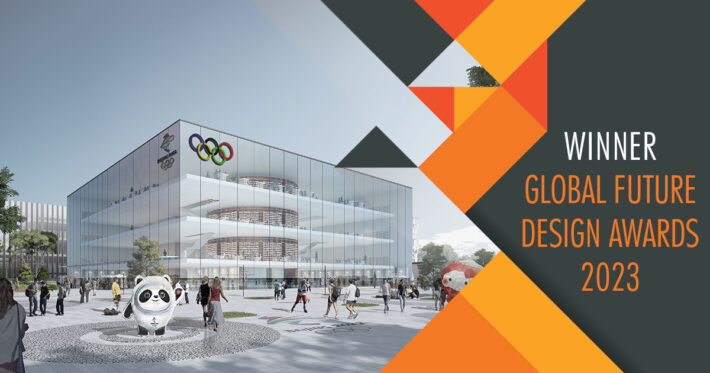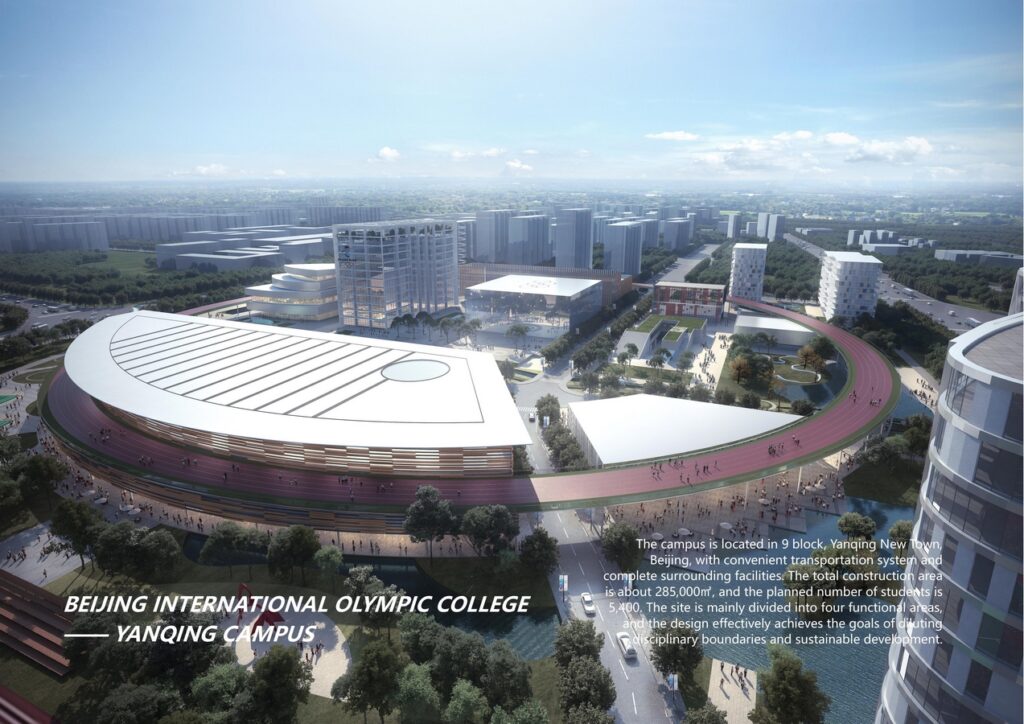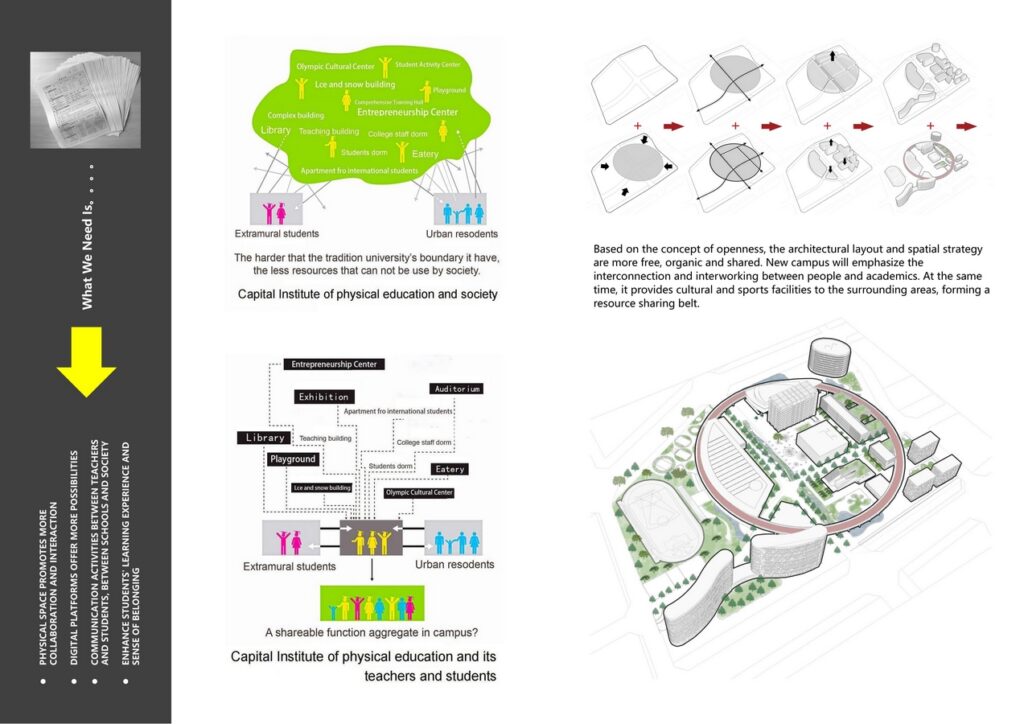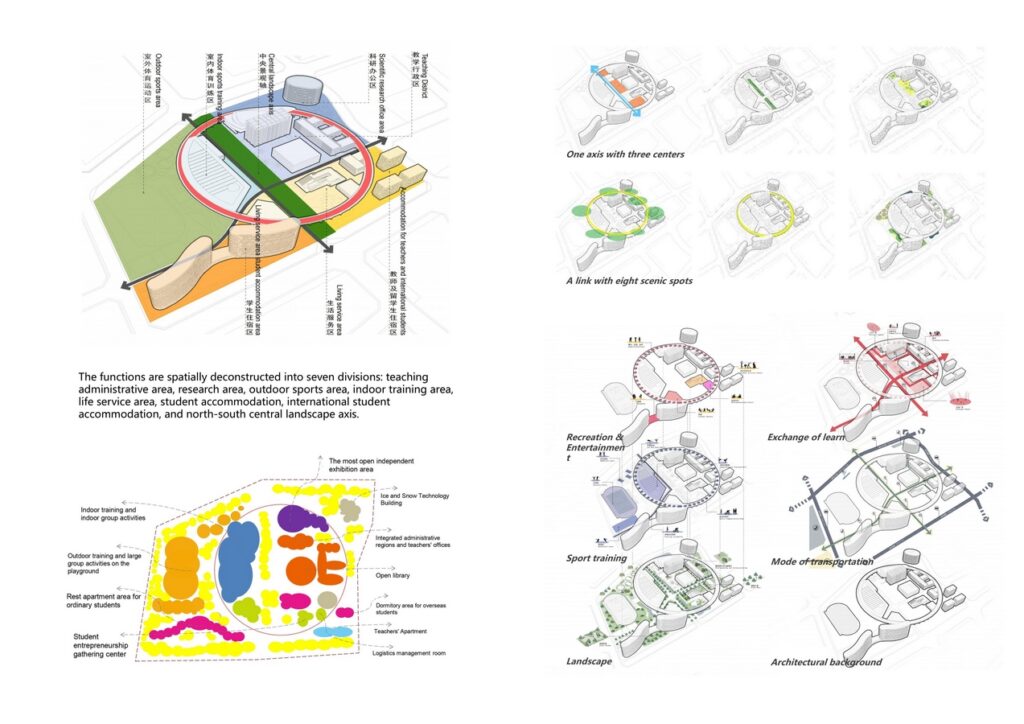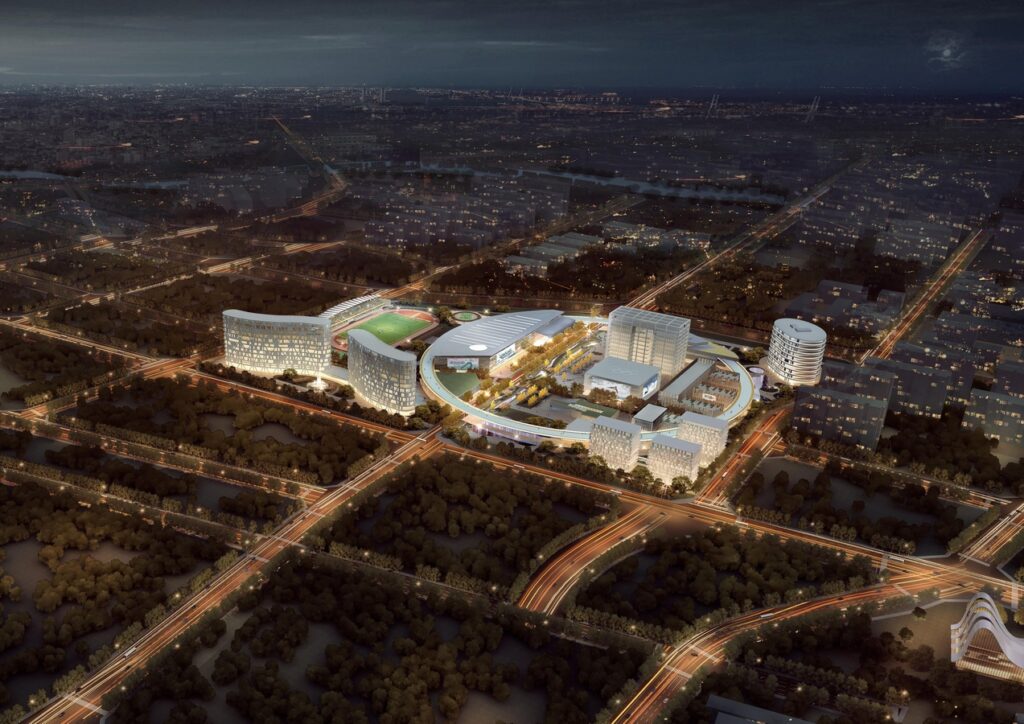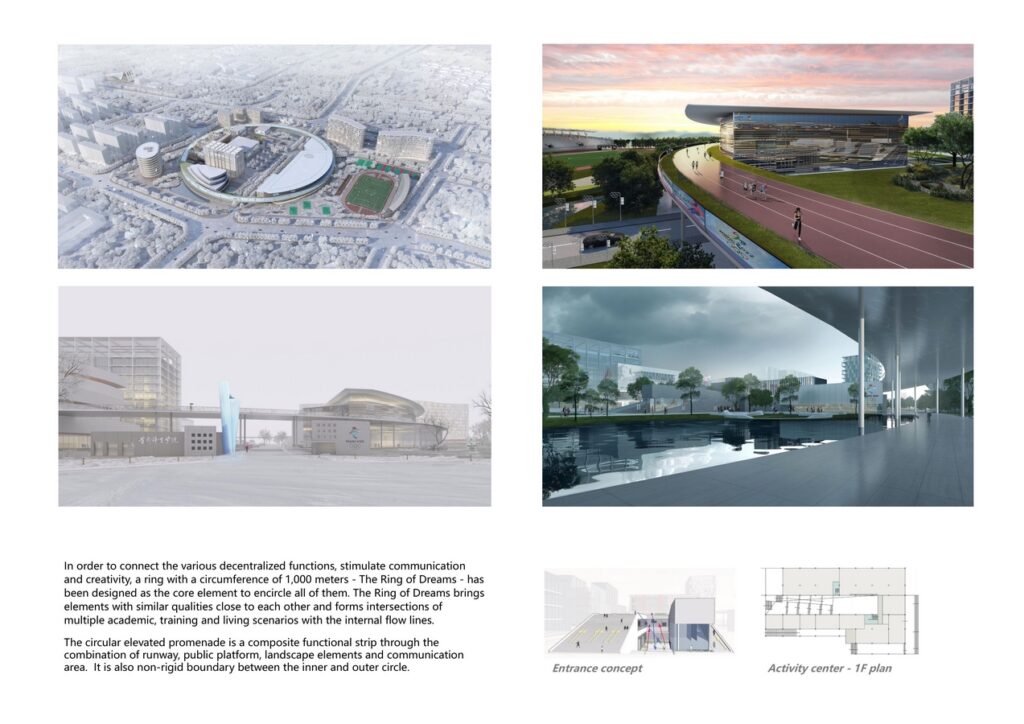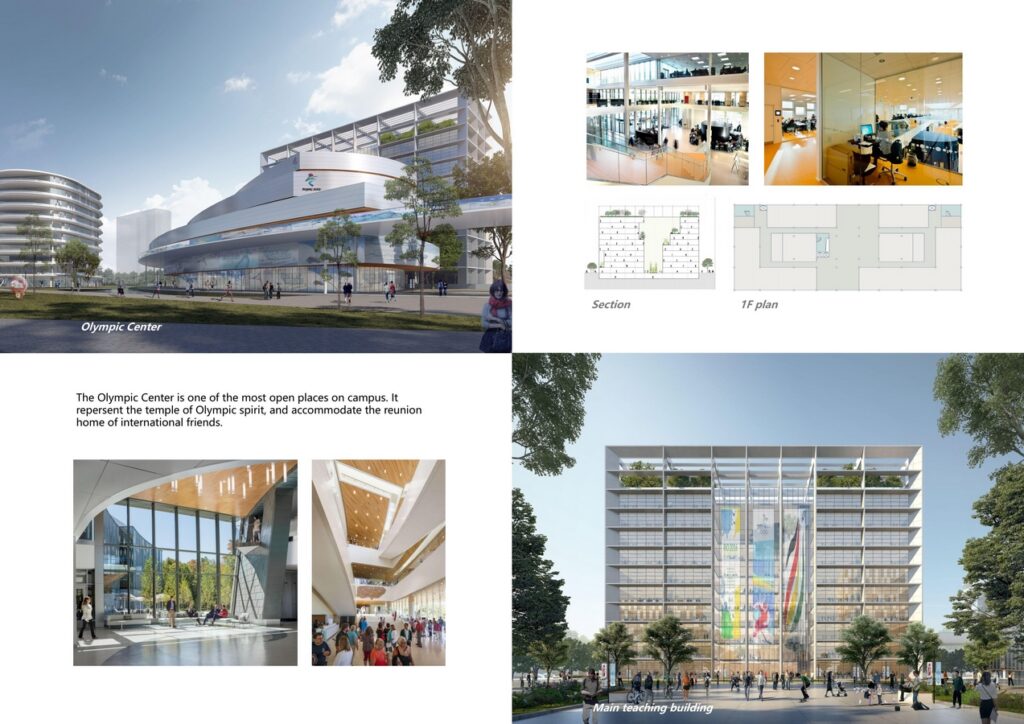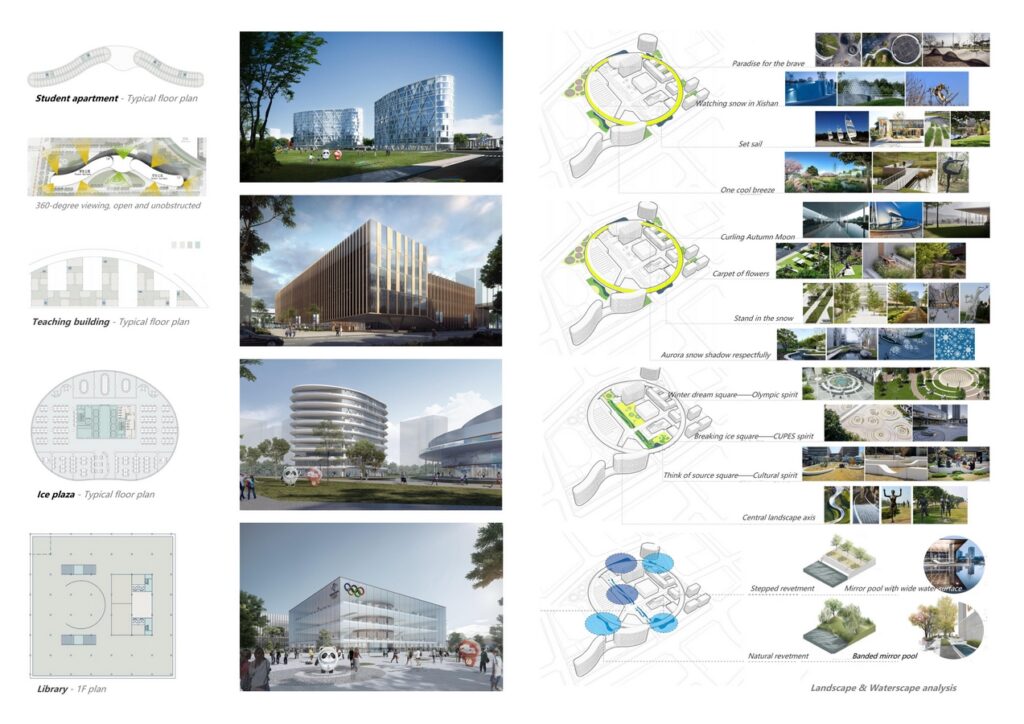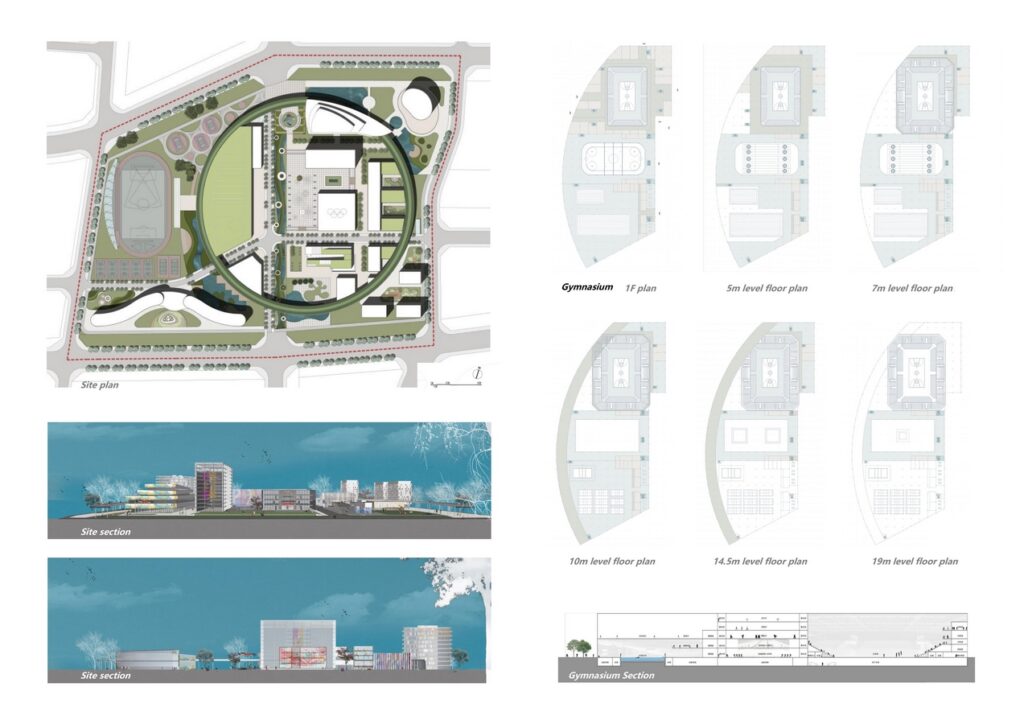The project is located in Block 09 of Yanqing New City Quarter, close to Shiyuan Village and approximately 700 meters far away from Yanqing Metro Station. The transportation is convenient and efficient, and the surrounding facilities are relatively complete. It covers a land area of roughly 360 mu and a total building area of approximately 285,000 square meters (above the ground: 217,000 square meters; underground: about 68,000 square meters), sufficient to accommodate 5,400 students. According to the plan and design, the base is divided into four functional areas that will weaken interdisciplinary boundaries under the design principle of centralization on the whole and dispersion in small parts for better communication and sustainable development.
Global Future Design Awards 2024: Entries Open!
Take your work to the next level. Register Now…
Gold 🏆 Winner
Global Future Design Awards 2023
Beijing International Olympic College, Yanqing Campus
Educational Architecture (Concept)
Firm
Zhengliang Zhong
Architect/Designer
Zhengliang Zhong
Design Team
Chen Zhenjiang, Chu Jianwei, Lu Wei
Project Location
Beijing
Country
China
Photographer/Copyright
©GIV Architects
Social Media Handles
Facebook: Not Available
YouTube: Not Available
Instagram: Not Available
Twitter: Not Available
Website URL
www.giv.hk
In traditional universities and colleges, buildings are dispersed with independent use functions in clear-cut areas, but they lack validity and spaces for students to communicate with teachers. This program gives a greater focus on the people-to-people and people-to-academy connectivity. Based on open design concepts, the Yanqing campus is more liberal, organic, and shared in architectural layout and spatial structure, and its interactive relationship with the city will be established. The campus will provide cultural and sports facilities for surrounding areas, forming a resources-sharing belt. Various facilities, such as public runways, lecture halls, stadiums, and gymnasiums, will be divided by openness to form a layered structure facing the public.
With the design principle of centralizing architectures on the whole and scattering them in small areas, the project plans to deconstruct the campus, by function, into seven areas: academic & administration area, scientific research office area, outdoor sports area, indoor sports training area, living service area, students lodging area, and teachers and overseas students lodging area. In addition, the north-south municipal road running through the campus will be built as a central landscape axis, guaranteeing the transportation function while constructing a public landscape for the city.
In order to connect various decentralized functions and stimulate communication and creativity, the “Dream Ring”, with a circumference of 1,000 meters, is designed to be a core element surrounded by all functions. The “Ring of Dreams” draws elements with similar qualities close and forms multiple interactions of academic, training, and living scenarios with internal flow lines. This circular overhead promenade is, in essence, a compound functional belt combining functions of the runway, public platform, landscape, and transportation. On the one hand, it, as the main line, connects various main public buildings and internal services, making the entrances and exits in multiple layers accessible and creating an extensively shared room; on the other hand, it is a boundary and, together with the planned roads, forms a spatial division strip between the internal and external of the campus by function.
Based on the geographic characteristics of the campus, we have groped ways to collect and use water for landscapes. We will take rainwater, infiltrated groundwater, etc., as renewable water resources and collect, purify, and exploit them in an ecological mode. The mode will not only solve the difficulties of water drainage, storage and regulation, as well as water quality maintenance, but also provide water for indoor and outdoor landscapes as well as buildings and other platforms that comprehensively use further treated water, such as cooling water. In this process, we strive to better carry through the idea of ecological design and integrate the idea into the whole life cycle of landscapes, especially into management and maintenance, so as to improve the campus’ landscape environment and students’ living quality and promote the application of sustainable water landscapes.


